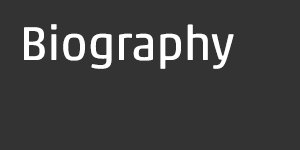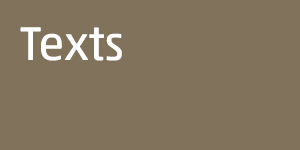Personal
Ardent love, Magdalena Ujma
Temperature
They are beautiful, colourful, and they don't mean anything, and that's what I love them for...These were the words Józef Robakowski wrote about his Termogrammes (1) - the series of his works from the recent years.
The Thermogrammes are images of the metal parts and various objects, hinges, screws, forks, cog-wheels placed one upon the other evenly over the whole surface of the piece. The image is made without the use of the camera and with the use of no other tool. There are certain thermal processes responsible for its making caused by the artist. Yet he is not able to foresee the final effect of his activity.
The image exists independently. One could say - it plays a trick upon us. As soon as we get used to it - it starts vanishing until it finally merges itself with the yellowish background of the sheet of paper, it undergoes continuous changes. First its more distant shapes, those placed in the background, lack their vividness then they get washed away almost in front of the viewer's eyes. Tracing all those 'cracks' in the painting, demonstrating its unpredicatbility, its lack of link with reality, and finally its independence of its'author' - is a constant motiff of his artistic activity, its frequency of occurence rendering it as if an obsession of Robakowski. He ponders in bewilderment photography has lost its status of truth, that morality (of the image) undergoes systematic degradation (2). The roots of is bewilderment could be sought back to his studies at the ŁódŸ Filmówka, where he was taught the photo image is a true semblance of reality. Whereas meanwhile, Robakowski says, his students at he same institution today think it obvious photography has nothing to do with truth.
What is surprising, though is not just the look of the Termogrammes but the use of the word 'love' by their inventor. It is doubtless a provocative term, applied specially and solely for the given purpose. Why is yet the statement the artist loves his own piece to be provocative? For it is the sort of artist/work of art liason that has lost its validity. It is suggestive of self-praise, the excessive emotional temperature.On the other hand today's artists no longer create masterpieces, or just artworks, but designs. It has been derived from, among others, the conceptioon of the artist as a specialist-engineer, someone whose professional activity involves his knowledge and skill, and not his emotions. As a matter of fact the 'designs' seem to be closer to the constructivist, conceptual, rational tradition. Robakowski's art stems from. Yet we do not expect the designs to be beautiful and that one loves them. We are thus faced here with emotions, and the author's revealing his presence, his ostentatious subjevctivity.
We cannnot avoid the impression of a game. It is the game of mimicry, ridiculing his own buffoonery as an artist and the buffoonery of the art reflection, the uffooneruy of the whole artistic scene. In fact this is playing it high: staking his own independence upon it. Upon being, to use Robakowski's own words, an organizational drone (3). Even the name sounds ironical: the Termogrammes are but Hot Images.
He wrote in the catalogue of the Thermogrammes exhibition at the Lublin Art Exhibitions Bureau: Please, give me a stronger kick. I like that taste of voltage - 10, 20, 40, 80, 150, 200... Can I have yet another 10 - now it's enough!I feel really good, I feel delight, I feel positive. ...I feel the delightful shivers in my body. Extasy? It brings forth some erotic connotations that no one has yet noted in the context of the activity of the founder of the Film Form Workshop. In the next sentence Robakowski explains: I feel THAT ART is becoming pure, for I have no message to pass on to YOU, even though I have become our mutual energetic screen. (4) The author's presence made manifest it yet does not depend upon our demonstra tion of his perplexities, but the exposition of his physique - and his bodily experience of delight or pain. In many pieces by Robakowski there follows the conjunction of the body with some optical implements. The avant-garde biomechanic has also been questioned there. The avant-garde optimism - viewing the artist as one imparting energy, an engineer shaping the new world and the new man - is reduced to the dissolution of whatever illusions connected with the utopia, showing that geometry may be a matter of chance, in such pieces as Biolologions (where the geometrical composition is made up of the imprints of the hair of the author's eye-brows).
Organism
The exhibition is called Organic Pictures. Organic, i. e. natural, which pertains to the living thing. Organic is the name of the branch of chemistry investigating the processes occuring with the part of the element of life - carbon. The organic means something contrary to the mineral, dead, but also abstracted from life, placed upon the higher level - of idea, of reason., of Logos. Organic is the one who holds on to substance, to its lowest, tissue, extra-verbal layer. Both of these meanings can be found in the art of Józef Robakowski. For once there is no metaphysics of image there, there is always the concrete, something most fundamental - the carrier of the image, or its language that are revealed, there are certain components of the image that are revealed - even though what transpires is something apparent, for what sort of the concrete are we faced with in his Astral Photos or his Photos of Nothing. So the concrete can be apparent, and it can be contradicted by the art pieces. But the photos in question do not lead us towards transcendence, for the demonstration in photos of some would-be materializations of thoughts is but a ridicule of such tendencies. For the other the body is a recurring theme in Robakowski's art. But this is just the body, his 'heroes' are often its parts, for instance the epic of the suffering thumb, the stories of fingers, or the ailing foot.
For Robakowski organicity means the construction of the piece that is able to reconcile the logical structure with the unpredictable filler, the geometry with its tissue of non-form (Informel)it is overgrown with. And that predilection had its source in his his study time - this time in Toruń where he read art history and conservation. He then got interested in ... the Gothic. He said about it: I was fascinated with the winding stairs in the church towers, where - beseeched with the sense of confinement, one needed to cover hundreds of steps in order to recover his biological liberation. (5)
The first pictures Józef Robakowski used to make, around the time he sat his entrance exam to the Filmówka, were coloured, small-format pieces one doubts whether to classify as paintings or photos. Realized in the late 1950s the refer to the Informel of the political Thaw. They already exibit the ideathat will permeate the artist's art until today. They are the pictures the artist has not got the full grip of, their effects rendered after some time only he may be quite puzzled with. The colour patches splashed to form vivid blots form abstract, biological, rich structures. Likewise the later realized Intuitive Images. In his Biologions, just as in his Thermogrammes we are confronted with the idea of the image that is both created and destroyed upon its own accord. Some of them were executed using the technique of thermal print, they are also drawings made with a single line, thus referring to the idea of Wacław Szpakowski, inspired by the organic geometry of vegetation or folk art.
The collapse of his faith manifests itself yet differently in his piece Astral Photos. The idea was an outcome of his wish to demonstrate the image that did not exist. Following the patterns of the 19th century.Paris Robakowski organised the mediumist seances. The photos from that series are the apparent imprints of people's thoughts, desires, wishes - all that may enter the human mind. There appeared supposedly in the course of adherence to the body of the person whose thoughts were taken photo of. Similarly the Photos of Nothing do not show heaven, as we might judge from the sub-title. The image they are supposed to be reflections of does not exist. The themselves are but non-lasting recording of the processes taking place upon the thermo-sensitive paper. The pieces from the series Energetic Angles were born out of the combination of photo techniques with painting. The angles contain some 'energetic' potential, expressive enough, they either cut into the formless patches of colour, or they themselves rule over the plane creating endless tensions upon the picture's surface. They can be also found in the city space - for instance in tenement roofs. Construction seems no longer to display any ordering function there, geometry struggles with the lack of form, and reason is in combat with irrationality. Impulsators in turn are video pieces which form afterimages upon the viewer's retina due to the rhythmical light impulses. There is a picture of something non-existing, an impossibile picture that emerges in the human eye. There can be no imprint that would be closer to the human body.
And the picture is generated there ... by one's blinding. I have already mentioned the Thermogrammes. Let me add there, too, the image was formed by touch, by the placement of some warm objects upon the sheet of paper (Robakowski would probably say: The sheet aches).
The Self-Preservation Instinct
The sense of humour, the creative reference to body art, conceptual art, master of the film experiment, but also Malevich, Pawłowski, or Witkacy, self-irony, as well as his demonstration of unpredicatability of modern technologies - all of them make the modernist paradigm of art to fall through in Robakowski's rendering. Yet his art - by way of reference to its predecessors, to certain development lines - is well established in the tradition of the artist's inner autonomy and its own contestation of the avant-garde.
Robakowski searches for cracks, inconsistencies and tensions in art. This is what he finds most fruitful, most interesing. One could say - he nourishes himself with crisis. Maybe it is the self-preservation instinct of the artist at the time of the end ofart that gets voiced there - no matter how lofty this might sound.
1. The text can be found on the website: http://www.robakowski.net/htm/teksty.htm
2. Józef Robakowski, Operation upon Reality, Exist, 2002, No 4, p. 2822.
3. Józef Robakowski, Confession of the pseudo-avantgardist (upon his jubilee), [in:] Labirynt Gallery 1974-1994, Lublin b.d. p. 118.
4. Józef Robakowski, Art-Sick... [in:] The Thermographs. Hot Images, exhib. cat., Galeria Stara, BWA Lublin, 1999.
5. Józef Robakowski, Energo-Geometry, the text published in the present publication, and earlier [in:] Bozena Koalska, In Search of Order, Artists about Art.BWA Modern Art Gallery, Katowice; EL Gallery, Elblšg, 2001.







